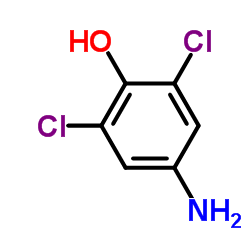Mechanistic aspects of 4-amino-2,6-dichlorophenol-induced in vitro nephrotoxicity.
Gary O Rankin, Suk-Kil Hong, Dianne K Anestis, John G Ball, Monica A Valentovic
文献索引:Toxicology 245(1-2) , 123-9, (2008)
全文:HTML全文
摘要
4-Amino-2,6-dichlorophenol (ADCP) is a potent acute nephrotoxicant in vivo inducing prominent renal corticomedullary necrosis. In vitro, ADCP exposure increases lactate dehydrogenase (LDH) release from rat renal cortical slices at 0.05 mM or greater. The purpose of this study was to examine the ability of antioxidants, cytochrome P450 (CYP) and flavin adenine dinucleotide monooxygenase (FMO) activity modulators, indomethacin, glutathione and inhibitors of glutathione conjugate metabolism to attenuate ADCP cytotoxicity in vitro. Renal cortical slices prepared from untreated male Fischer 344 rats (N=4/group) were preincubated at 37 degrees C under a 100% oxygen atmosphere with an inhibitor or vehicle for 5-30 min. ADCP (0.05-0.5mM) or vehicle was added and incubations continued for 120 min. At the end of the incubation period, LDH release was measured as an index of nephrotoxicity. ADCP cytotoxicity was partially attenuated by ascorbate (1.0 or 2.0mM), but not by N,N'-diphenyl-p-phenylenediamine (DPPD), alpha-tocopherol or deferoxamine. Inhibitors of CYP (metyrapone, piperonyl butoxide and isoniazid) and FMO activity modulators (methimazole, N-octylamine) had no effect on ADCP cytotoxicity. Indomethacin or glutathione 1.0mM completely and partially blocked ADCP 0.1 and 0.5mM cytotoxicity, respectively. N-acetylcysteine, AOAA (an inhibitor of cysteine conjugate beta-lyase) and probenecid (an organic anion transport inhibitor), but not AT-125 (an inhibitor of gamma-glutamyl transferase), partially attenuated ADCP 0.1mM cytotoxicity. Overall, these results suggest that reactive metabolites may be produced from ADCP primarily via a co-oxidation-mediated mechanism. The difference in the ability of ascorbate and glutathione to attenuate ADCP-induced cytotoxicity in vitro in kidney cells could indicate that alkylation via the reactive benzoquinoneimine metabolite might be responsible for cytotoxicity rather than a free radical-mediated mechanism.
相关化合物
| 结构式 | 名称/CAS号 | 分子式 | 全部文献 |
|---|---|---|---|
 |
2,6-二氯-4-氨基苯酚
CAS:5930-28-9 |
C6H5Cl2NO |
|
Characterization of methemoglobin formation induced by 3,5-d...
1997-03-14 [Toxicology 118(1) , 23-36, (1997)] |
|
Fluorescent materials for pH sensing and imaging based on no...
2013-09-28 [J. Mater. Chem. C 1 , 5685-5693, (2013)] |
|
Theory and practice of enzyme bioaffinity electrodes. Chemic...
2008-06-11 [J. Am. Chem. Soc. 130(23) , 7276-85, (2008)] |
|
Theory and practice of enzyme bioaffinity electrodes. Direct...
2008-06-11 [J. Am. Chem. Soc. 130(23) , 7259-75, (2008)] |
|
In vivo and in vitro 4-amino-2,6-dichlorophenol nephrotoxici...
1994-05-31 [Toxicology 90(1-2) , 115-28, (1994)] |